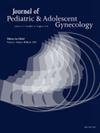3. A novel approach for controlled drainage of giant ovarian cysts through mini-laparotomy
IF 1.8
4区 医学
Q3 OBSTETRICS & GYNECOLOGY
引用次数: 0
Abstract
Background
Large ovarian cysts in adolescents often present with low malignancy risk, prompting discussions about optimal surgical strategies. Minimally invasive methods aim to reduce complications, pain, hospitalization length, and scar appearance. As such, there is a desire to utilize less invasive approaches for the removal of large to giant masses. However, the advantages of minimally invasive surgery must be balanced with the risks of spillage, including malignant seeding and upstaging, chemical peritonitis, and recurrence. A few minimally invasive techniques have been proposed, including adherence of surgical gloves or bandages, controlled drainage with catheters, or use of the Alexis laparoscopic system. These techniques are poorly standardized and can fail to remain adherent during the case. We aim to describe a unique approach for the safe drainage of giant ovarian cysts.
Case
We present four adolescents with giant ovarian cysts (10-30 cm) and low pre-operative concern for malignancy, who proceeded to surgery for definitive treatment of the mass and associated symptoms. In all cases, a 4-6 cm midline infraumbilical incision was used. After obtaining adequate exposure of the mass, we adhered the rigid ring of a sterile 3 cm silo bag designed for ventral wall defects (Image 1) to a dried surface of the mass using sterile surgical glue. After ensuring the glue was dry, we trimmed off the closed distal end of the bag to allow access to the cyst surface. Through the constructed opening of the bag, the cyst was then entered sharply and contents were drained. In three cases, no spillage of contents was noted (Image 2) after multiple (1.9-5) liters were drained. In one case, there was minimal spillage noted due to malfunction of the suction device. In all but one case, the ovarian cortex was spared after cystectomy. In all cases, the bags remained firmly adherent to the ovarian cortex until the ovary and cyst could be exteriorized. There were no postoperative complications, and patients were discharged on postoperative days 0-2.
Comments
We introduce a safe, ovarian-sparing approach for extracorporeal drainage of giant adnexal cysts using a silo bag for spillage prevention through a mini-laparotomy incision. We believe this technique would be readily reproducible at many hospitals.
3. 小型剖腹手术控制巨大卵巢囊肿引流的新方法
背景:青少年大卵巢囊肿通常表现为低恶性风险,促使关于最佳手术策略的讨论。微创方法旨在减少并发症、疼痛、住院时间和疤痕外观。因此,人们希望利用侵入性较小的方法切除大到巨大的肿块。然而,微创手术的优势必须与泄漏的风险相平衡,包括 恶性播散和占位,化学性腹膜炎和复发。已经提出了一些微创技术,包括手术手套或绷带的粘附,导管控制引流,或使用Alexis腹腔镜系统。这些技术的标准化程度很差,可能 无法在病例期间保持一致。我们的目的是描述一个独特的方法安全引流巨大的卵巢囊肿。我们报告了4例患有巨大卵巢囊肿(10-30厘米)的青少年,术前对恶性肿瘤的担忧较低,他们进行了手术以明确治疗肿块和相关症状。所有病例均采用4-6厘米脐下中线切口。在获得足够的肿块暴露后,我们使用无菌手术胶将专为腹壁缺陷设计的3厘米无菌筒体袋的刚性环粘接在干燥的肿块表面。在确保胶水干燥后,我们修剪掉闭合的袋子远端,以便进入囊肿表面。通过袋子的开口,然后迅速进入囊肿并排出内容物。在三个案例中,在多次(1.9-5)升排水后,没有发现内容物溢出(图2)。在一个案例中,由于吸入装置故障,有最小的溢出。除一例外,卵巢皮质在膀胱切除术后均未受损。在所有病例中,囊袋都牢牢附着在卵巢皮层上,直到卵巢和囊肿可以外化。术后无并发症,于术后0 ~ 2天出院。我们介绍了一种安全的、保留卵巢的方法,通过小剖腹切口使用筒体袋进行巨大附件囊肿的体外引流,以防止溢出。我们相信这项技术在许多医院都可以很容易地复制。
本文章由计算机程序翻译,如有差异,请以英文原文为准。
求助全文
约1分钟内获得全文
求助全文
来源期刊
CiteScore
3.90
自引率
11.10%
发文量
251
审稿时长
57 days
期刊介绍:
Journal of Pediatric and Adolescent Gynecology includes all aspects of clinical and basic science research in pediatric and adolescent gynecology. The Journal draws on expertise from a variety of disciplines including pediatrics, obstetrics and gynecology, reproduction and gynecology, reproductive and pediatric endocrinology, genetics, and molecular biology.
The Journal of Pediatric and Adolescent Gynecology features original studies, review articles, book and literature reviews, letters to the editor, and communications in brief. It is an essential resource for the libraries of OB/GYN specialists, as well as pediatricians and primary care physicians.

 求助内容:
求助内容: 应助结果提醒方式:
应助结果提醒方式:


